10 Ways to Get Rid of the Wish-Cycling in Your Company for Once and For All
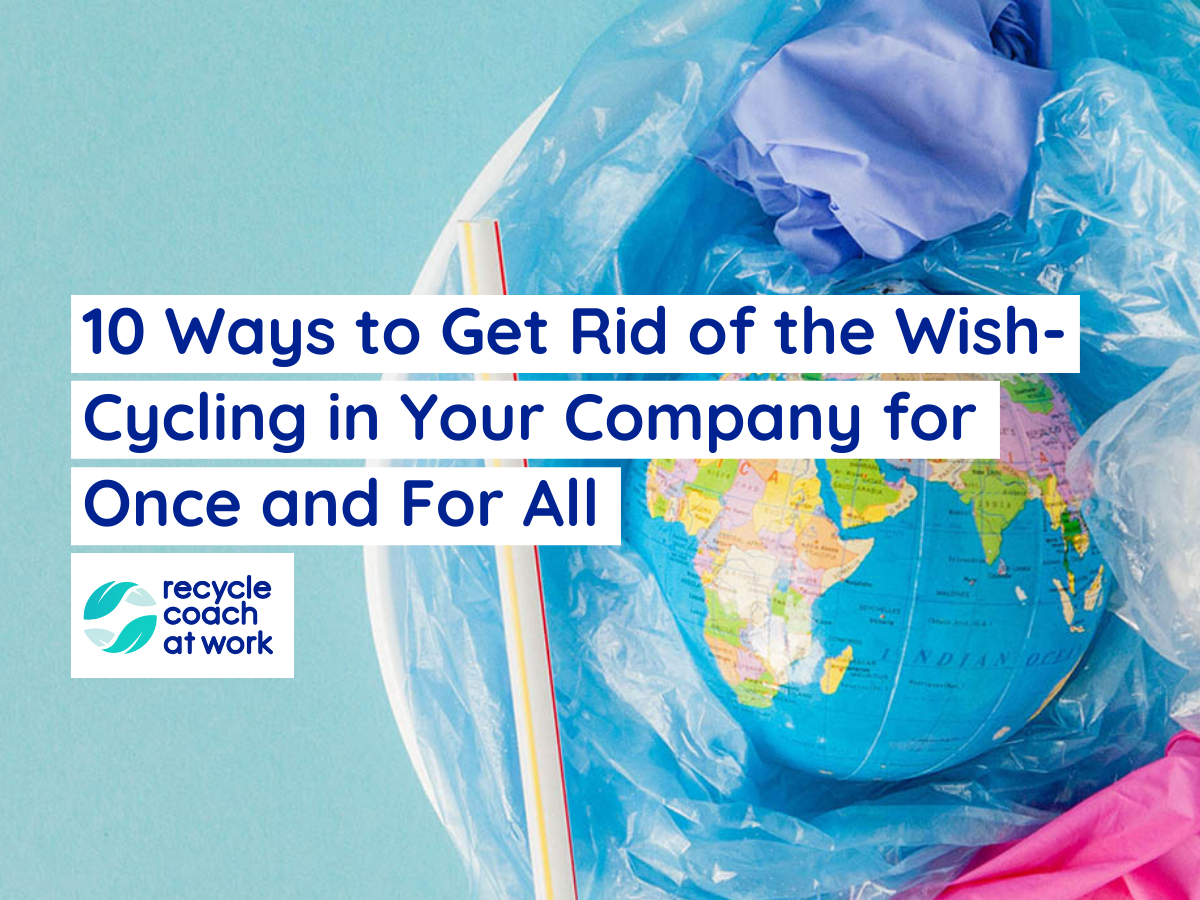
Is wish-cycling a serious problem in your office?
For too long, wish-cycling has robbed your company of impressive recycling results, taken money out of your pocket, and reduced your recycling efforts to little more than an Earth Day matinée.
The truth is, a huge amount of your company’s recycling may be ending up at a landfill. And it’s because your employees don’t know how to recycle. It’s hardly their fault, they hope for the best and then they act on it. The only trouble is, that 1 in every 4 items thrown in the recycling is contaminated.
What this means, is that a batch of recycling material has become unusable and can no longer be recycled – due to high food waste rates, or incorrect materials in the batch.
Too much contamination spoils an entire recycling batch. Wish-cyclers in your office are undermining the good recycling habits of your entire company! Smarter recycling practices will fix the bad habits that some employees have embraced as a result of never knowing what can and what can’t be recycled.
Let’s put an end to this wish-cycling – for now and forever.
What is Wish-Cycling, Really?
Wish-cycling, also called wish recycling, is when a person hopes that an item can be recycled, so they put it in the recycling bin just in case. Everyone at some stage has done it.
- Ever recycled a red solo cup?
- How about an oil stained pizza box?
- What about that plastic straw you used during lunch?
You meant well, but you got it wrong.
There is a pervasive and insidious assumption that the good folks at the recycling plant will right the wrongs of the general public. Sometimes the item can’t be recycled, sometimes it’s contaminated with organic waste. The latter is increasingly true.
What do you recycle that might be a wish-cycle? Think about it!
What Happens When Employees Wish-Cycle?
When your employees wish-cycle, there is an accumulative effect on your company, on the recycling plants, and on the environment. The cost of recycling goes up when you get it wrong.
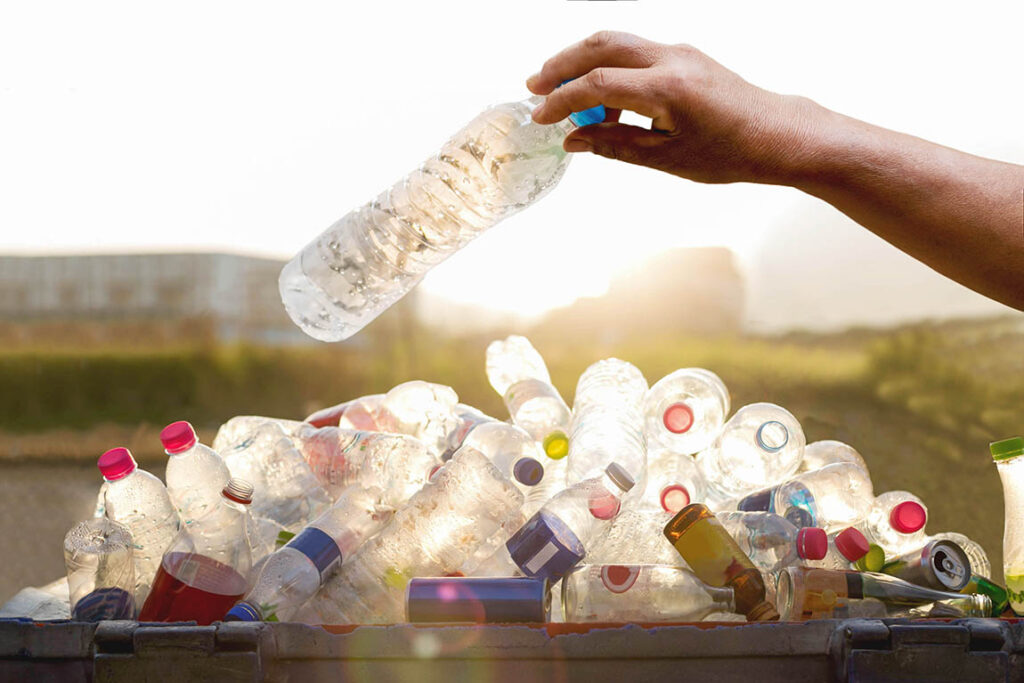
-
- Your recycling program becomes less effective. Your recycling rates may be high, but what matters is how much of that recycling is actually being processed.
-
- You throw a literal stone in the works for your recycling company. They rely on the resale of your recycled items. If they’re contaminated, entire batches won’t sell, they make less money and worse – their machinery is often damaged by foreign contaminants.
- The environment suffers as more contaminated recycling heads to the landfill, where huge amounts of methane will continue to negatively impact global warming and climate change.
A breakdown of the entire process is what happens when recycling is contaminated at your company. Wish-cyclers are filled with good intentions, and do a lot of real harm. America is having real problems with too much contaminated recycling.
How Clean Do Recycled Materials Have To Be?
The question is – do recycled items need to be clean? And how clean should they be? With the recycling contamination issue looming, it’s important to get this right.

- Most materials just need a quick rinse
- Anything oily or greasy is a strict no-go
- If it clings, scrub it off the sides
- If it’s really dirty, throw it in the trash bin
As a company, if you’re going to explain how recycling practices can lead to environmental sustainability – to your clients and customers, then it’s a good idea to practice clean recycling.
#1: Appoint a Green Team
If recycling education is important to you, you’ll need a green team to head up your educational initiatives and make sure everything runs smoothly at work. Knowing what not to recycle and what to recycle is a start – but give that information to your company green team and they will run with it for the benefit of your employees.
#2: Engage Your Employees With Technology
Wish cycling isn’t going to magically go away on its own. Your team needs help learning how to recycle properly, so that your waste doesn’t contaminate entire batches of recycling.

It’s no secret that technology improves the emotional commitment employees have to your organization and your sustainability goals. And that’s what you need – commitment.
Technology that engages your employees on an ongoing basis will come in handy. Our research shows that our web-based recycling app has 10X higher engagement rates than normal web traffic.
#3: Raise Your Employee’s Recycling IQ
One of the best ways to rid your company of wish-cycling woes is to invest in recycling education. A web app can deliver a multitude of resources that will raise your employee’s recycling IQ.
You’ll be able to instantly deliver education on specific materials and answer questions like ‘what do you recycle in the break room?’ or ‘can a computer screen be recycled?’
This is how aspirational recycling becomes intentional recycling.
#4: Include Green Updates at Every Meeting
Your green team should make briefing your employees on your wish-cycling improvements a weekly or monthly ritual. A quick three minute update will keep your company on target.
Share some recycling contamination facts with everyone to engage them and keep the issue top of mind. If your company drastically improves, it’s cause to congratulate and celebrate!
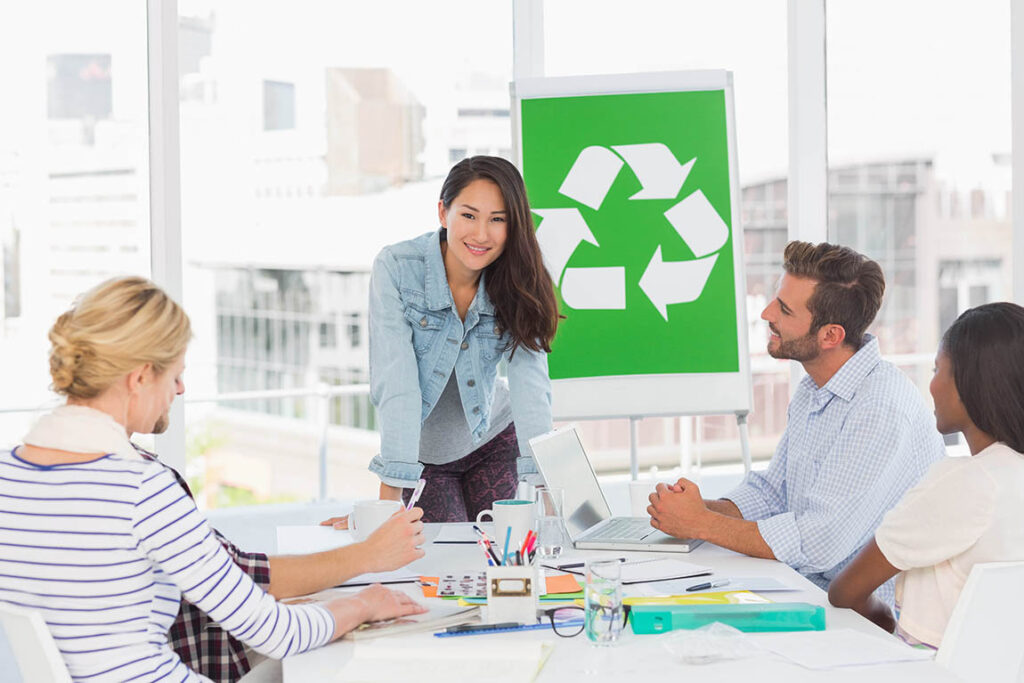
#5: Adopt Sustainable Lunch Practices
Being part of the solution is as easy as adopting more sustainable lunch practices. For example, encourage your employees to have plastic-free lunch boxes that are reusable.
What happens when recycling is contaminated, is that organic matter (typically food waste stuck to plastic) clogs up the machines and brings things to a halt. No plastic means no chance of that! Check out our post on creating a plastic-free lunch box culture here.
#6: Connect Employees to a Recycling Calendar
How do your employees know what’s going on with your aspirational recycling problem at any given time? What about special events, milestones or updates on your progress?
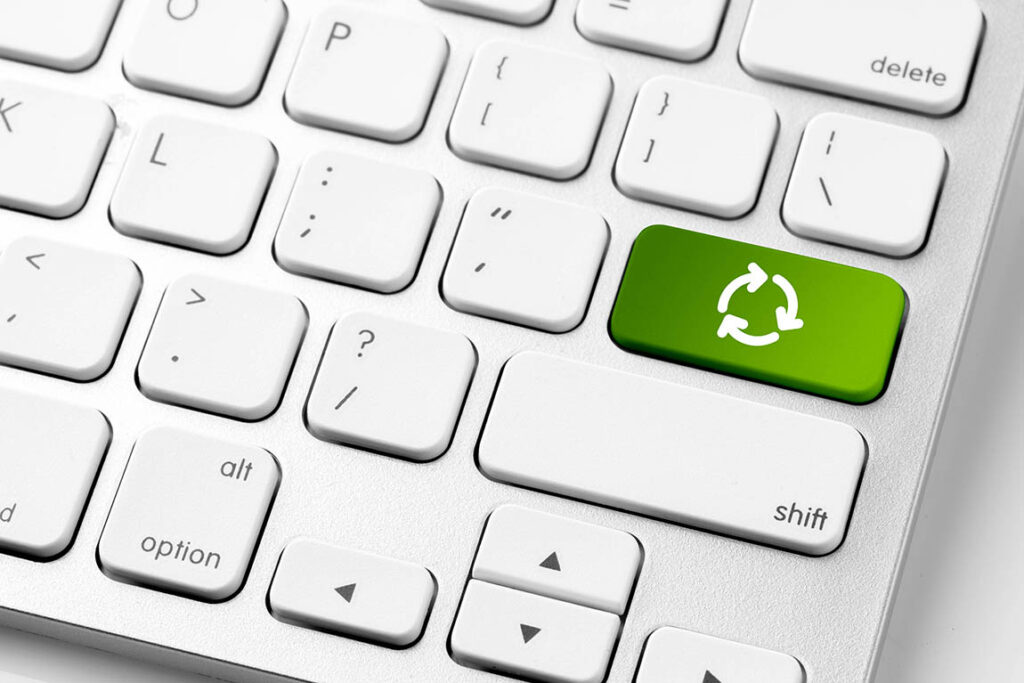
By linking your teams together with the right internal technology, everyone’s calendar becomes a green calendar. Send them notifications and emails about what your green team has been up to.
You can also give them access to what not to recycle in the form of a recyclepedia. Then, wherever they go they’ll have a usable resource at work.
#7: Create a Trash-Only Tangler List
There are things you can recycle, and there are things you can’t recycle. When wish cycling happens, some of those things end up tangled in machines, which costs recycling companies time and money. Worse still, is that it prevents recycling from actually getting recycled.
Help them out by creating a ‘trash-only list’ of common items that cause tangling. Sync with your local municipality and get your green team to mock up a list for display at your recycling bins.
Plastic bags and frozen food boxes are two such culprits. Remember to update this list around the holidays – that’s when real trouble strikes!
#8: Reward Your Best Employee Recyclers
When wish-cyclers become recyclers and learn how to properly recycle, you should reward them! This will encourage others to follow in their footsteps. Having a ‘recycler of the month’ plaque is a great way to nurture accountability.

Be creative, make it fun, and encourage a bit of friendly competition! When your recycling contamination rate drops, everyone should be celebrating.
#9: Give Employees Access to a Smart Search App
A smart search app like Ask Milo is a web-based tool that will help you and your team know what things you can’t recycle, and what things you can. Are plastic utensils recyclable? Can paper towels be recycled?
Just Ask Milo for the answer. Then you can use the analytics to track and measure how much your wish cycling has improved.
#10: Get the Recycling Basics Right
Spend some time getting recycling basics right, with a refresher course for your employees. Answer questions like, ‘Do recycled items need to be clean?’ and ‘where do I recycle e-waste at work?’
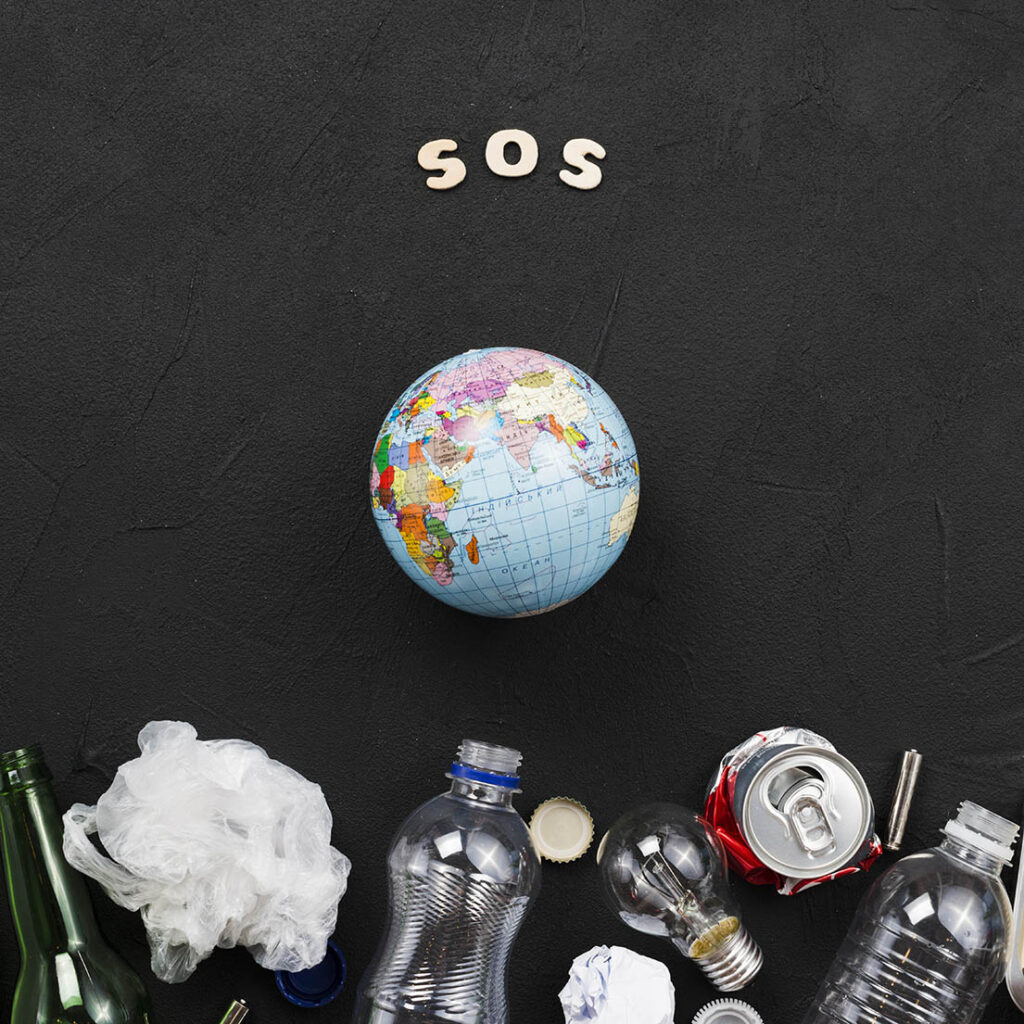
Host informal seminars, learning experiences and day trips where the goal is to find out more about the recycling process and how to make it better. If you use the Recycle Coach at Work web-app, your employees will be able to access a recycling academy, where they’ll learn amazing sustainability practices.
A Move Towards Intentional Recycling
The practice of wish cycling must come to an end. It’s prompted China to stop taking our waste, which has caused many recycling programs to shut down. With a sudden leap in recycling costs, we all need to do our part to keep these programs on track. The culprit is contamination!
Wish cycling doesn’t have to be a part of your business in 2020. It is so important to take steps to eliminate it from your work culture, so that your recycling programs continue to be effective. Now you know what happens when recycling is contaminated and can take steps to stop wish cycling in its tracks. Use these 10 ways to make sure it isn’t undermining your green team’s efforts this year!
Have you ever recycled something you didn’t know could be recycled? It’s confession time.